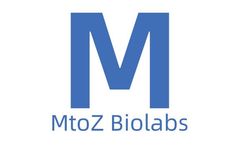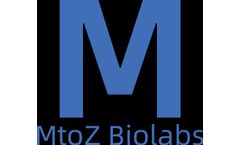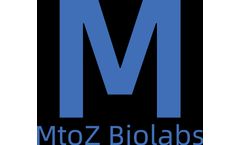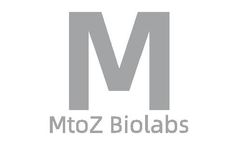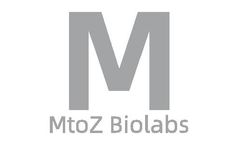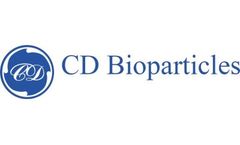Drug Ind Application Articles & Analysis: Older
38 articles found
Knockin cell line generation represents a pivotal advancement in genetic engineering, providing vital tools for biological research and therapeutic development. This process involves the integration of specific DNA sequences into precise loci within the genome, allowing scientists to explore gene function, model diseases, and develop new treatments. Understanding Knockin Cell Line Generation At ...
Alfa Cytology has introduced its advanced drug development services for brain tumors. Alfa Cytology, celebrated for its cutting-edge biotech solutions and extensive tumor research expertise, has recently introduced brain tumor drug development services, designed to empower researchers in understanding the intricacies and unique challenges associated with brain tumors. Brain tumors represent a ...
Antibody drugs are a type of drugs that treat diseases through artificially synthesized antibodies, which bind specifically to target molecules for therapeutic purposes. Common types of antibody drugs include monoclonal antibodies, artificially synthesized antibody fragments, immunotoxins, and antibody-drug conjugates, etc. Antibody drugs have shown significant therapeutic effects in the ...
Glycosylation impurities are a type of chemical commonly encountered in biochemical, medical, and pharmaceutical chemistry research. The presence of these impurities can affect the efficacy, safety, and stability of drugs. Therefore, the detection and analysis of glycosylation impurities are crucial in ensuring the quality and therapeutic effectiveness of pharmaceutical products.What are ...
Antibodies are an essential part of our immune system, capable of recognizing foreign molecules (antigens) and helping to eliminate them. Antibodies have a high degree of target specificity, affinity, and safety, and have been widely used in the treatment, diagnosis, and prevention of many major diseases. They are currently a focus in new drug development. The design of antibody drugs is a ...
Circular Dichroism (CD) uses the absorption properties of optically active substances to analyze the molecular structure of drugs. It has very valuable applications in drug analysis, including:1. Identification of Drug StereochemistryMany drug molecules are chiral, and their activity, metabolism, and toxicity can significantly differ due to stereochemistry. CD can differentiate the different ...
Antibody drugs, particularly monoclonal antibodies (mAb), play a critical role in the treatment of many diseases, especially in the treatment of cancer and immunological disorders. To ensure the effectiveness and safety of these antibody drugs, it is necessary to perform activity testing.Definition of Antibody ActivityThe activity of an antibody drug usually refers to its ability to bind to the ...
Nanobodies, also known as single-domain antibodies, have gained much attention in recent years due to their potential in various biomedical applications including drug delivery systems. Nanobodies are small antibody fragments derived from naturally occurring heavy-chain antibodies found in camelids, such as camels and llamas. They are composed of a single monomeric variable domain, making them ...
Introduction Cellular mechanisms driving cell death play a crucial role in various physiological and pathological processes. One such mechanism is apoptosis, a tightly regulated process vital for maintaining tissue homeostasis, development, and immune response. Apoptosis assays are valuable tools used by researchers to study the intricate details of this cellular event. This blog aims to ...
Polymers play an important role in the biomedical field, and polyethylene glycol (PEG) and its derivatives are among the multifunctional polymers that have attracted much attention. PEG is a synthetic macromolecule with a linear structure consisting of glycol units (-CH2CH2O-) repeatedly linked. Its unique properties give PEG a wide range of applications. PEG is soluble in organic solvents and ...
Microneedles have gained significant attention in recent years for their potential in drug delivery applications. These tiny needles, typically measuring less than 1 mm in length, can painlessly penetrate the skin and deliver drugs in a precise and controlled manner. One of the key challenges in microneedle fabrication is achieving high precision and uniformity in needle design, and this is where ...
The field of medicine is constantly evolving, with researchers and scientists striving to find innovative ways to deliver drugs effectively and efficiently. One of the most promising technologies that has emerged in recent years is nanoparticle development for drug delivery systems. Nanoparticles are tiny particles with dimensions in the nanometer range, making them ideal for targeting specific ...
Introduction In the world of molecular interactions, understanding the forces that drive binding events is crucial for advancing scientific research and developing new therapies. One powerful technique that has revolutionized the study of molecular interactions is Microscale Thermophoresis (MST). In this blog post, we will delve into the world of microscale thermophoresis, exploring its ...
Micelles refer to molecularly ordered aggregates that begin to form in large quantities after the surfactant concentration reaches a certain value in an aqueous solution. In micelles, the hydrophobic groups of surfactant molecules aggregate to form the core of the micelle, and the hydrophilic polar groups form the outer layer of the micelle. Liposomes are an artificial membrane. In the water, the ...
Proteolysis Targeting Chimeras (PROTACs) are a novel approach for degrading target proteins. Recently, a new split-and-mix PROTAC (SM-PROTAC) system based on liposome self-assembly, known as LipoSM-PROTAC, was reported in the Journal of the American Chemical Society. The LipoSM-PROTAC system exhibits selective degradation of target proteins, with folate serving as a key ligand. In this study, the ...
Imagine tiny spheres, smaller than a red blood cell, glowing as they navigate the labyrinthine corridors of the human body. These aren't fireflies, they're fluorescent liposomes, a cutting-edge tool in the world of drug delivery and biomedical research. What are liposomes? Liposomes are microscopic bubbles made from phospholipids, the same fatty molecules that make up cell membranes. These ...
Proteins are the workhorses of life, performing a vast array of essential functions, from catalyzing biochemical reactions to building and maintaining cellular structures. Protein engineering, a rapidly evolving field at the intersection of biology, chemistry, and computer science, aims to harness the power of these molecular machines by designing and manipulating their structure and function to ...
Microneedle patch technologies have revolutionized the field of drug delivery, offering a wide range of advantages over traditional methods. These innovative patches provide a minimally invasive and painless alternative to injections while ensuring precise and controlled drug administration. In this article, we will explore various types of microneedle patch technologies, including ...
Microspheres play a crucial role in the field of pharmaceuticals, biotechnology, and materials science due to their unique properties and applications. These spherical particles, ranging from a few micrometers to several millimeters in size, have a wide range of uses, including drug delivery systems, cell encapsulation, and as supports for various chemical reactions. Polymeric microspheres, ...
Introduction of Drug Affinity Responsive Target Stability (DARTS) Drug target protein identification is an important step in the research and development of new drugs. Drug Affinity Response Target Stability (DARTS) is a technique that can rapidly and directly identify potential target proteins of small molecule drugs. That is, it prevents the target protein from being hydrolyzed by proteases ...



